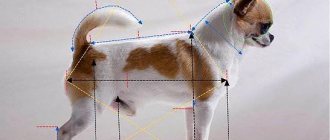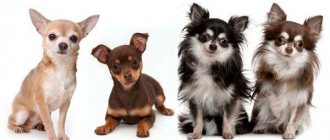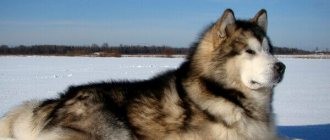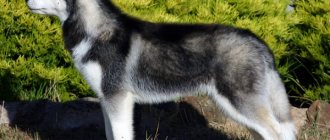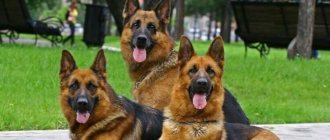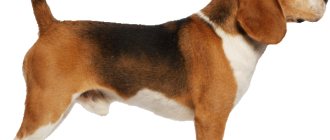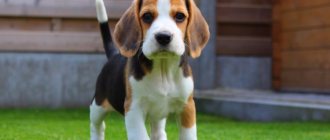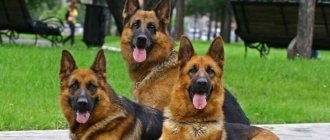The Chihuahua is the smallest dog with a toy appearance and a cheerful character. Its popularity has recently been at its peak despite the fact that the breed has been known for a long time. The first mentions in the form of images of Chihuahuas date back to the third century BC. They were discovered in Mexico, the largest state of which gave the dogs their name.
The Chihuahua breed standard was approved by the FCI and RKF in the middle of the last century. An owner who plans to take part in prestigious exhibitions with their pet must know them and choose a puppy according to the prescribed requirements.
Brief breed historical information
The breed first came to attention in the mid-19th century in the Mexican state of Chihuahua .
. Chihuahua), after which it is named.
There is an opinion that the ancestors of the modern Chihuahua are ancient small dogs of the Techichi breed, who lived and domesticated during the existence of ancient peoples: the Toltecs, Aztecs and Mayans.
This is evidenced by archaeological finds found throughout Mexico in the form of figurines depicting a small dog, similar in appearance to a modern Chihuahua. Historical examples date from the 9th century AD.
Techichi was a sacred animal, sacrificed to the gods, and served as food and a small pet for ancient Indian tribes. Read more in the article: history of the Chihuahua breed.
The Chihuahua first appeared at the American Dog Show in 1904 in Philadelphia. The representative of the breed was a smooth-haired female named Midget, acquired on the Mexican border by Mr. Reiner.
In 1923, the National Chihuahua Club was founded and the first breed standard was developed, which included only the smooth-haired type.
In the 1930s, Texas breeders developed the longhaired variety.
In 1954, the Chihuahua standard was revised to include representatives of both species (smooth-haired and long-haired). Subsequently it was adopted by the RKF (Russian Cynological Federation).
Since 2010, no changes or additions have been made to the official document.
Compliance of a Chihuahua dog with the standard is mandatory if the owner plans to:
- participate in breed dog shows;
- engage in breeding work to breed purebred puppies with a pedigree;
- become a member of the NCP (National Breed Club).
Based on the criteria below, the judges determine the dog’s compliance with international standards for the Chihuahua breed and decide on the admission of a potential participant to participate in the exhibition.
A dog's compliance with the generally accepted standard indicates its purebred origin. Otherwise, an exterior class is assigned according to the degree of the defect: “breed” or “pet”.
Key points in training
Training a breed can be a challenging task, so education is the first issue. They need to be taught order and family hierarchy. A small lap dog should not be allowed to sit on a person’s neck. She must remember several rules: eating only after the family gets up from the table (begging is suppressed), entering the house after household members, sleeping and playing on the owner’s furniture is prohibited.
After the puppy remembers the name and gets used to his schedule, you can try to teach him basic commands that will help control the pet: sit, next to me, not allowed, quiet.
Contacting cynological services and clubs will make the owner’s work easier. Plus, pets are better trained in a group. Chihuahuas are good at agility, so a course with obstacles will be a good workout and a way to concentrate.
Read about how to properly train a dog in the article: “Training a puppy: effective methods from dog handlers, learning commands at home.”
Appearance of the dog
The body is compact and proportional. A characteristic feature of the breed is the skull, which forms the shape of an apple. The neck is of medium length, voluminous, smoothly flowing into tightly built shoulders. Dark, rarely light, expressive large eyes. The back is level, short and strong. The tail is moderately long, rises high above the body, curved in the shape of a semicircle (sickle), with the tip directed towards the lumbar region. The gait is elastic, energetic, confident and relaxed. Any coat color except merle.
Health
We can say that the Chihuahua has good health. The average life expectancy of these decorative dogs is 12-14 years, but there are also centenarians who managed to live to 20 years or more. It all depends on the care, nutrition and maintenance of the animal. A caring owner should know the diseases that are most often found in representatives of this breed:
1. Hydrocephalus (water on the brain) . Chihuahuas are predisposed to hydrocephalus due to the fact that they are born with a fontanel. The skull is formed only by 3-4 months. 2. Allergies . Allergic reactions can occur to anything: detergents, perfume, food... The problem manifests itself as hair loss and skin rashes. The pet suffers from severe itching. 3. Problems with teeth (caries, periodontitis, pulpitis, tartar, etc.) Prevention of the listed diseases is proper care of the gums and teeth from puppyhood. 4. Difficulties in childbirth . Small bitches usually give birth to one or two puppies. They can be quite large in size, which leads to complicated childbirth. Many Chihuahua owners immediately turn to a specialist to have a caesarean section. 5. Undescended testicles (cryptorchidism) . Genetic congenital disease in males. 6. Dislocation of the kneecap . It may be a genetic-congenital problem or acquired due to injury in the knee joint. 7. Epilepsy . A brain disease that is accompanied by seizures.
The owner must ensure that the pet is vaccinated on time. It is also necessary to show the dog to a veterinarian for preventive examinations. With such careful care, many health problems can be avoided.
Head and facial features
According to the standard, a feature of the breed is the head, which visually represents the shape of an apple. A “deer” type head signals a crossbreed (not purebred), i.e. the individual is a mixed breed, which serves as a basis for disqualification from participation in breed exhibitions and refusal to obtain a pedigree from the RKF.
Until recently, a sign of purebredness was considered to be the presence of an open fontanel with a diameter of no more than 2 cm on the crown of the skull. Today, an open fontanel in adults is recognized as a disqualifying defect, which is confirmed by the latest entries made on September 15, 2010 in the official standard of the Chihuahua breed under number 218.
